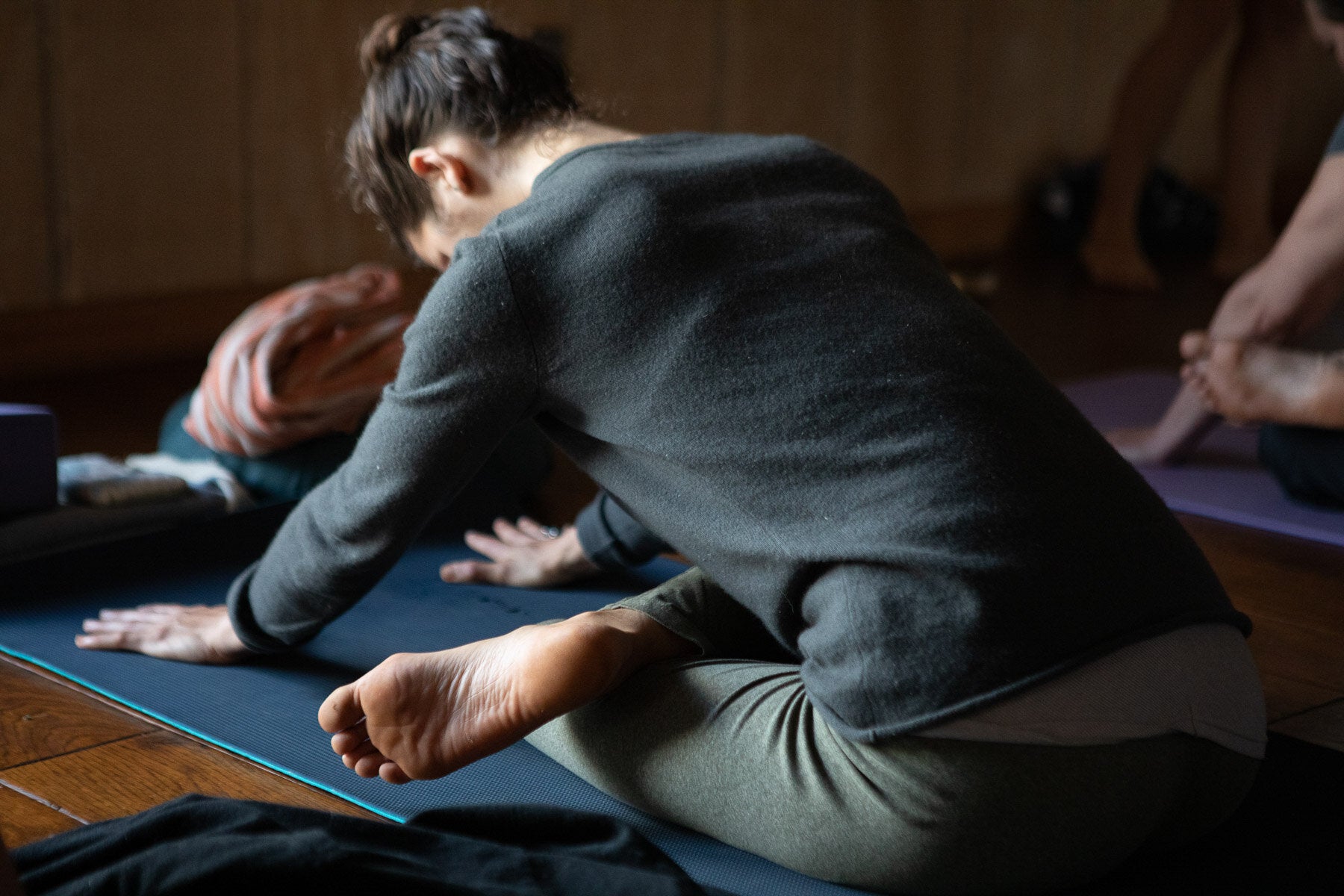
Do you have a regular Yoga and Ayurveda practice?
Semi-regular? Regularly irregular? Maybe you’re like many folks out there - you go through phases of practicing consistently and then somehow it falls off.
So what is it that gets in the way of you making and keeping a real commitment?
Motivation
Take a look at your motivation. Are you practicing satya, and making your decisions from a place of honesty? Or are you deluding yourself in some way?
Why is it that you want to practice Yoga? Perhaps you’re wanting to look better or lose weight? These aren’t bad motives but they sit at the surface of things, and the surface is changeable like the clouds in the sky. This might mean that you stop practicing when you see some satisfactory results and start again when you feel like you’ve fallen out of shape. The pendulum swings with your perception. You aren’t working from a stable foundation- and without a foundation it’s easier to succumb to the distractions and resistance of the mind.
Resistance
These days I often hear clients telling me that they don’t practice regularly because they are afraid of being rigid.
What is rigidity? Stiffness. Inflexibility. Severity.
So what I am hearing is that people are afraid that a daily Yoga and Ayurveda practice might get in the way when something more important (or perhaps more fun) comes up. I then have to ask,
What is more important (or fun) than feeling good?
Fear of rigidity and inconsistency are really the same thing - because you’ll find resistance is at the root. Either you’re forcing yourself to practice or you feel like it’s something that you’d like to escape from. Somehow fear has become associated with the practice - and fear is not a basis for meaningful change in life. Rather, it breeds avoidance, delusion and distraction.
Practice satya
So, the first step is to ask yourself - why do I want to practice? Write down all of the reasons - everything that comes to mind. Practice satya - self-honesty. This means taking care to remove the opinions of others from your inner dialogue. Notice if you use the word “should” - this is usually an indication that someone else’s point of view is intertwined with your own.
If at the end of this process you have decided that your practice is important to you. If you have decided that it is a priority to really nurture yourself, then define your commitment.
What do you want your practice to look like?
There is a difference between saying “I’m going to try to go three times a week to Yoga” and “I’m going to allow the time for my practice because I’m committed to feeling good in life” - the latter statement is one rooted in personal power, in strength, and in courage.
How much time you allow is up to you - the key is regularity. I’ll give you an example of what can be accomplished with commitment:
5 minutes per day
Recently I have been working with a client in her late 60s. When I met her she was always snacking because of a fear of blood sugar fluctuation. This caused constant bloating and digestive issues. The fear she was experiencing was related to a significant imbalance in vata dosha, and so I suggested that she begin meditating to calm her mind. She committed to five minutes of meditation each day. She started to feel better, and so she added another five minutes to her meditation along with a little pranayama. And now you should see her! She looks amazing. Her vitality has returned, her eyes are bright and she is enjoying her life.
And it began with a five minute per day commitment.
Flexibility within commitment
Ideally you are doing the same thing every day - a little meditation, pranayama and asana is great for most people. With a daily commitment, the practice then gains momentum and a beautiful metamorphosis unfolds. Well-being abounds!
But there are times when your regular practice will need to look a little different. Perhaps you have an early flight or you were up all night with a sick child. Rather than skipping your practice altogether, consider changing it to fit in with the exceptional schedule. Maybe you don’t practice asana and instead commit to a 5 minute pranayama. This is flexibility within commitment - a recipe for a deep sense of peace and vibrancy.
Change comes more easily when we are honest with ourselves. Take the time to gain clarity, then take the next step.
If you decide that you’re ready to bring Ayurveda into your daily life in a powerful way, consider our 600-hour Ayurvedic Health Counselor training or our 200-hour Ayurvedic Health Advisor training.
